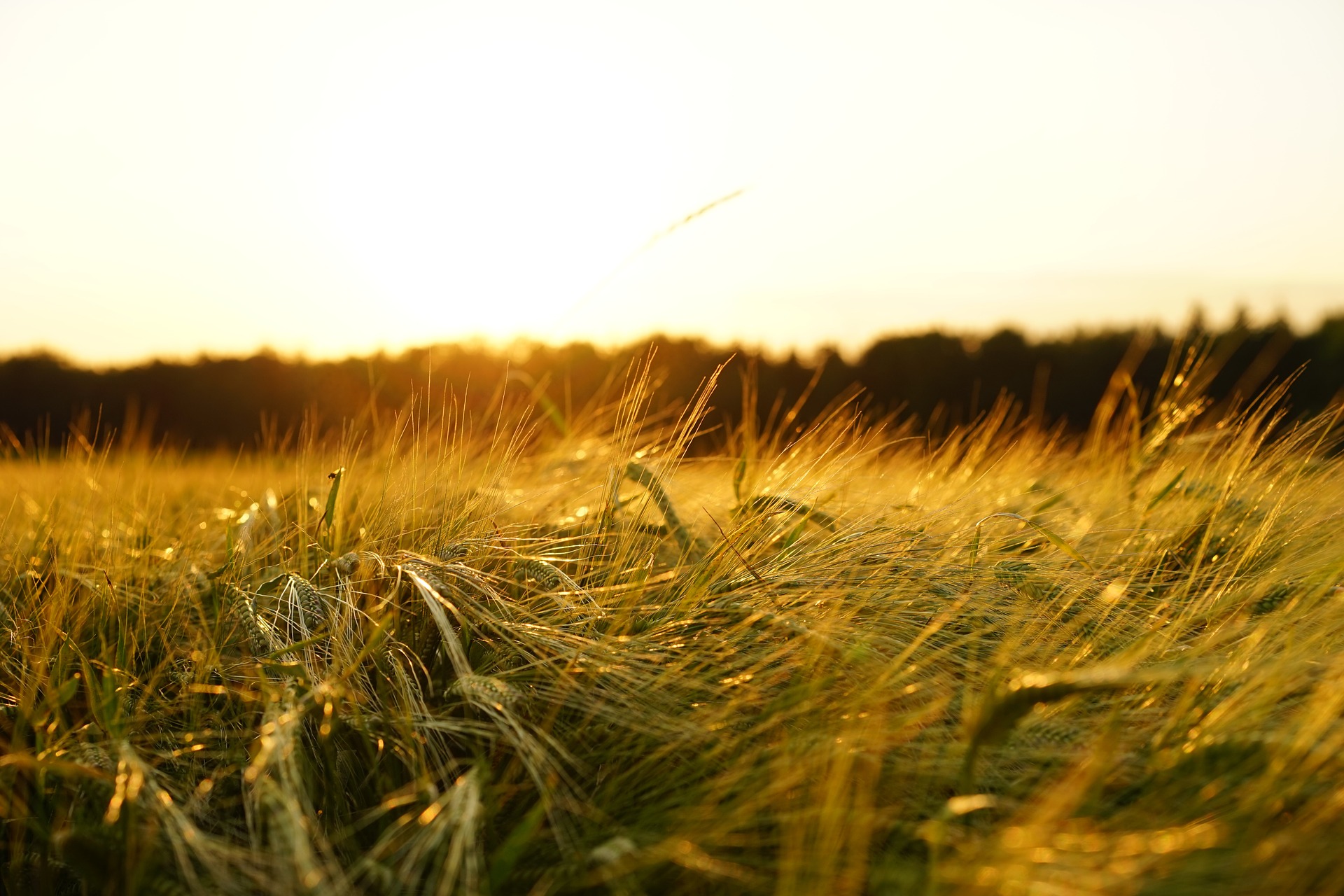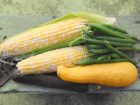Perennial crops compared to annual ones tend to be much more low maintenance, able to withstand droughts, pests, and weeds with resilience year after year. Perennial crops actually build the soil and promote a healthy soil structure because they never require freshly tilled ground. They can be periodically divided or propagated and shared with friends and neighbors or multiplied around your garden or edible landscape.
Fall is the best time to plant perennial crops that bloom in spring or summer. Because the plants are going into a period of dormancy or slow growth, transplant shock is minimized. The cool rains of fall and winter snow allow the plants root systems to become established in their new location and get off to a good start. By the time spring returns your plants will be happy in their new home and need minimal care compared to ones that has been transplanted in the spring. The following is a list of 20 perennial vegetables and plants (excluding berries and small fruits) to plant now and enjoy for years to come:
- Asparagus (Asparagus officinalis)- Asparagus is a perennial vegetable grown for its delicious young shoots. Rich in B vitamins, vitamin C, calcium, and iron, asparagus is one of the first crops of spring harvest. Fresh-picked spears are far more tender and tasty than store-bought ones.
- Bunching or Egyptian Onions (Allium cepa var. viviparum)-Egyptian Walking Onions are one of the first plants to emerge in the spring. The leaves poke up through the soil like little green spikes and shoot towards the sky despite the frost or snow.
- Daylillies (Hemerocallis spp)-Daylilies come in many varieties and colors. Their blooms and buds are tasty and nutritious. A wonderful choice for an edible landscape.
- Good King Henry (Chenopodium bonus-henricus)-Good King Henry is in the same family as spinach, and its leaves are used in much the same way; however, its shoots are eaten like asparagus, flower buds like broccoli, and the seeds are an edible grain.
- Globe Artichoke (Cynara cardunculus var. scolymus)- Grown in zone 7 and above, the flower heads are eaten. A newer cultivar, ‘Northern Star’, is said to be able to overwinter in more northerly climates, and readily survives subzero temperatures
- Ground Nut or Potato Bean (Apios Americana)- Nitrogen fixing vine that has highly nutritious tubers, tasting somewhat like nutty potatoes. Harvest in fall.
- Horseradish (Armoracia rusticana)-Grows to 30 inches tall and puts down long, thick, white roots which are grated to make a fiery sauce. Roots mature in 150 days. Roots are harvested throughout the winter.
- Host-In Japan they are commonly boiled, fried in tempura or eaten raw. With a flavor reminiscent of lettuce and asparagus, they can easily be substituted in salads. Choose young, tender shoots. Check out this link for more info.
- Jerusalem Artichoke (Sunchokes Helianthus tuberous)-Jerusalem artichoke tubers resemble potatoes except the carbohydrates composing 75 to 80% of the tubers are in the form of inulin rather than starch. Once the tubers are stored in the ground or refrigerated, the inulin is converted to fructose and the tubers develop a much sweeter taste. Dehydrated and ground tubers can be stored for long periods without protein and sugar deterioration. Tubers can be prepared in ways similar to potatoes. In addition, they can be eaten raw, or made into flour, or pickled.
- Lovage (Levisticum officinale)-Similar to celery in taste (but stronger!), all parts of the plant leaves, stems, roots and seed, are edible.
- Nettles (Urtica dioica)- A vitamin-rich food source as well as a remedy for various medical conditions. These are stinging nettles, so plant in an out of the way place. Eat as you would cooked spinach, or make into a nutritious tea.
- Malabar Spinach (Basella rubra)-Is a heat tolerant vining green. Not really spinach, but can be used in the same way.
- Ostrich Ferns (Matteuccia struthiopteris)-Fiddleheads! Native to the Northeast, a wonderful spring delicacy that is worth big money to chefs. Grows well in a shade garden.
- Ramps or Wild Leeks (Allium tricoccum)-A spring delicacy that grows wild in the eastern part of the U.S., but can be naturalized in a shady part of your landscape or garden.
- Rhubarb (Rheum rhabarbarum)-Winter hardy and resistant to drought. Don’t eat the leaves, as they are poisonous, but the stems are very edible. The leaves can, however, be used as a pest protector in your garden.
- Scarlet Runner Beans (Phaseolus coccineus )-A tender perennial that with a little mulch will survive the winter and re-sprout vigorously from the same root stock. Very productive and beautiful bean. The flowers, young leaves and tubers are also edible when cooked.
- Sea Kale (Crambe maritime)-Dramatic texture with its bold, distinctive foliage. Its thick leaves are bluish green, roundish, and ruffled along their margins, they add an eye catching presence to the sunny garden.
- Sorrel (Rumex acetosa)-Relative of rhubarb, a perennial green with lemon-flavored leaves that can be used for soups or salads. Best in the spring, grows well in cool northern areas.
- Watercress (Nasturtium officinaleI)- Grows best in water or fairly wet soil. Delicate watercress leaves have a peppery flavor, and are usually eaten fresh and raw in salads or sandwiches. Cress has lots of vitamins A, K and C as well as calcium and iron. It’s a very healthy green. If you use it in cooked dishes, it will be much milder in flavor.
- Water Lily (Nymphaeaceae)-Water lilies have several edible parts. The young leaves and unopened flower buds can be boiled and served as a vegetable. The seeds, high in starch, protein, and oil, may be popped, parched, or ground into flour. Potato-like tubers can be collected from the species N. tuberosa.
Visit Pick-A-Pepper.com to see what is available locally for your garden or table!
Similar Stories:
- Sunchoke: A Native Perennial Vegetable
- Plants For An Edible Pondscape
- Greens To Grow In Hot Weather
- Starting Asparagus From Seed
- How To Grow Stevia and Make Your Own Extract




